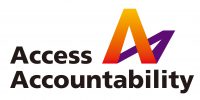Many human rights defenders around the world experience online harassment. This is largely due to the rise of social media and its growing use in activism. No one is immune to threats: in a 2018 statement by the UN High Commissioner for Human Rights, Zeid Ra’ad Al Hussein, rapporteurs for the UN Human Rights Council are reported to have experienced online threats of increasing seriousness. Human rights organizations such as Amnesty International have also raised the issue.
Current patterns of abuse show that female human rights defenders are more vulnerable to abuse, and that the main mode of attack is to damage the victim’s credibility and public image in an attempt to silence their voice. Due to the high degree of international online connectivity we are now subjected to, abuse and harassment can escalate extremely quickly. The damage can not only involve the victim’s credibility, but it can also have a significant psychological impact, causing stress, insomnia and depression.What is online harassment?
- Different types of threats can occur via online platforms:
- Your opinions are unfairly or wrongly misquoted in online news articles or social media;
- You receive derogatory comments such as racist or sexist abuse on your social media accounts;
- You receive deliberate, malicious commentary via the online platforms of others;
- Your private photos are shared online without your permission, sometimes altered without your consent to damage your reputation.
How to respond
In some instances, it may be appropriate to contact the harasser and tell them to stop. Do not allow anyone else to contact them on your behalf. Do not respond with aggression or any action that might be considered abuse, but tell the harassers you are not to be contacted or harassed in this way. In other situations, it may be preferable not to contact the harasser, but to report their conduct immediately.
How to report
Do not delete the record of harassment, but keep as much of the evidence as possible, from email records to chat logs. For example, take a screenshot of any social media pages where harassment appears, showing the date, time, and the name of the social media account. Save it as a pdf file and keep it in a safe place. Immediately complain to the appropriate parties and ask service providers such as Facebook or Twitter to take abusive content down. Consult law enforcement in your country for additional guidance. However, keep in mind that making a case can take up time and the costs can be prohibitive.Protect yourself from future abuse
- Although it may not be possible to avoid all forms of online abuse, there are key measures that all human rights defenders should take to minimize opportunities for attackers to cause harm. Here are some steps you can take:
- Block or ignore unwanted users
- Be cautious of uploading your personal photos and family, especially if you are female. Make your social media ID and email address as non-gender specific if possible.
- As online harassment can lead to real-world threat, do not post your personal information such as your contact numbers or addresses to your social media accounts. Check your privacy settings in social media to review who can see your posts. If you have been on social media for many years, review historical posts and remove anything you would not wish to see misused. (https://www.privacyrights.org/consumer-guides/online-harassment-cyberstalking)
- Use caution when accepting friend requests or follow requests on social media. Even if you are accepting friend requests from someone you recognize, it is wise to verify their identity by contacting them through another form of communication before accepting the request (https://www.privacyrights.org/consumer-guides/online-harassment-cyberstalking)
Resources
http://www.haltabuse.org/help/respond.shtml
https://www.privacyrights.org/consumer-guides/online-harassment-cyberstalking
https://www.stopbullying.gov/cyberbullying/how-to-report/index.html
Last Updated: September, 2018 Author: Yurim Choi